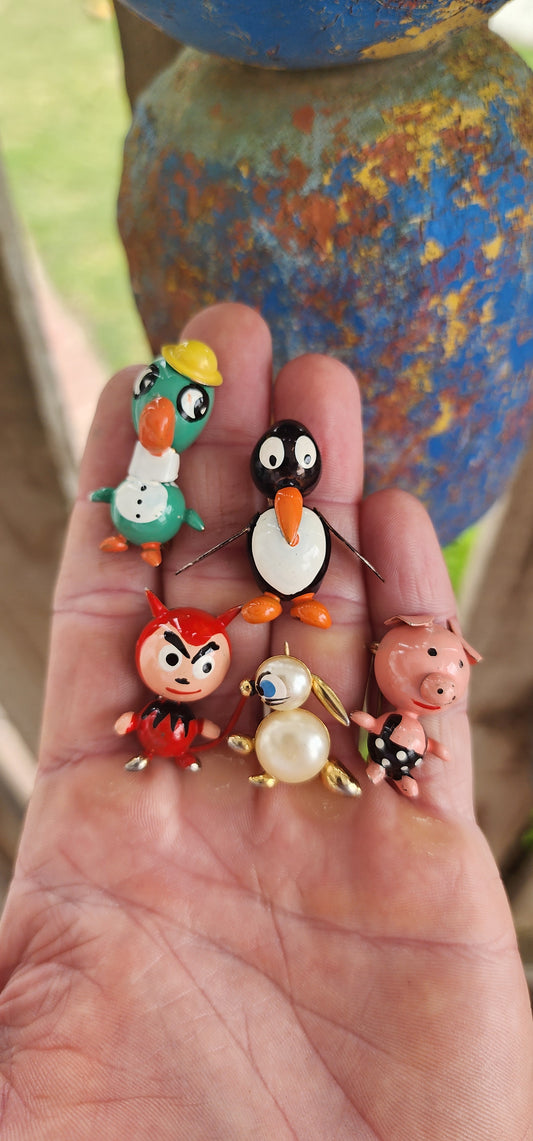Collection: Art Deco (1920-1945)
The period known as Art Deco, which began after World War I, was named after the French architect Le Corbusier. He named the Exposition Internationale des Arts Décoratifs et Industriels Modernes as "1925 Expo: Art Deco."
Unlike Georgian Era and Victorian Era jewelry, Art Deco Jewelry stands out for its geometric, angular, and sleek appearance. Many architects were motivated by the Art Deco style to create iconic buildings based on these principles.
Art Deco jewelry, which became popular in the 1920s and 1930s, featured a bold shift from the natural and fluid designs of Art Nouveau. The materials commonly used in Art Deco jewelry were selected to highlight precise geometric shapes and a feeling of luxury. Diamonds became the focus of attention, being highly desired for their stunning brightness and flawless transparency. Other gemstones such as sapphires, rubies, and emeralds were frequently utilized to introduce vivid pops of color, producing a striking and contrasting impact.
Art Deco was known for its unique change in design themes, moving away from the natural shapes of Art Nouveau. Art Deco jewelry commonly featured geometric precision, symmetry, and an air of luxury. Geometric shapes like triangles, rectangles, and circles were frequently used, often organized in detailed designs that communicated a clear message of organization and elegance.

-
Playful collection of 5x Art Deco–era circa 1920s–1930s novelty brooches, crafted in copper with hand-painted enamel details that burst with vintage charm and personality.
Regular price R 595.00 ZARRegular priceUnit price / per -
An extraordinary Art Deco-era 1920s carved Bakelite beaded choker necklace that embodies the bold glamour of its age.
Regular price R 1,495.00 ZARRegular priceUnit price / per -
Art Deco Era 1930’s Czech Faux Amethyst Glass Beaded Necklace.
Regular price R 495.00 ZARRegular priceUnit price / per -
A Deco Jungle Queen —1930s Faux Tortoiseshell Cameo Necklace.This rare and utterly captivating necklace is a true time traveler from that era — a perfect fusion of vintage sophistication and playful charm.
Regular price R 1,356.00 ZARRegular priceUnit price / perR 1,695.00 ZARSale price R 1,356.00 ZARSale -
"Bohemian Bloom — A Garden of Czech Delight".A burst of 1930’s Czech artistry.
Regular price R 395.00 ZARRegular priceUnit price / per -
Glamour never goes out of style—and this vintage treasure is living proof! This rare circa 1945 designer choker necklace by Coro is a glorious throwback to the golden age of fashion, dripping in bold Art Deco flair with a touch of retro-futurism.
Regular price R 695.00 ZARRegular priceUnit price / per -
Behold a true treasure from the Jazz Age—a rare and resplendent Art Deco-era necklace circa 1930s, strung with the bold style of the Deco movement.
Regular price R 788.00 ZARRegular priceUnit price / perR 985.00 ZARSale price R 788.00 ZARSale -
This fabulous Art Deco-era double strand costume necklace, dating to the glitzy 1940s, is pure vintage elegance with a side of silver screen sparkle. The strands are composed of rich, creamy glass faux pearls, each one lovingly hand-knotted.
Regular price R 695.00 ZARRegular priceUnit price / per -
This is a rare Antique German Art Deco-era pocket watch fob, often referred to as a chatelaine-style fob,dating to the 1920s–1930s.
Regular price R 596.00 ZARRegular priceUnit price / perR 795.00 ZARSale price R 596.00 ZARSale -
This costume brooch is pure vintage glamour with a dash of theatrical flair! Picture a grand ballroom in the roaring 1920s, where every accessory had to dazzle—and this Czech Art Deco beauty would have stolen the show.
Regular price R 356.00 ZARRegular priceUnit price / perR 445.00 ZARSale price R 356.00 ZARSale -
This is a rare and classic example of vintage Scandinavian Modernist jewelry, specifically a Georg Jensen sterling silver bar brooch, designed by Henry Pilstrup, a notable silversmith for Georg Jensen during the early to mid-20th century.
Regular price R 1,756.00 ZARRegular priceUnit price / perR 2,195.00 ZARSale price R 1,756.00 ZARSale -
This Art Deco-era brooch is an exquisite testament to both the bold geometric elegance of the 1920s and the centuries-old craftsmanship of Venetian Murano glassmaking.
Regular price R 595.00 ZARRegular priceUnit price / per -
Be prepared to fall in love with this adorable vintage art deco era penguin costume brooch, all dressed up in silvertone sparkle and ready for a night on the town.
Regular price R 325.00 ZARRegular priceUnit price / per -
This stunning piece of wearable history is an Art Deco-era brooch from the 1930s, crafted in 835 silver and set with glittering marcasite gemstones and green emerald paste rhinestones.
Regular price R 695.00 ZARRegular priceUnit price / per -
This 1940s vintage Art Deco-era bracelet by Casetti Gioielli is a striking example of mid-century Italian craftsmanship, blending Victorian Gothic Revival influences with the sleek, structural aesthetics of Art Deco design.
Regular price R 1,916.00 ZARRegular priceUnit price / perR 2,395.00 ZARSale price R 1,916.00 ZARSale -
This brooch is a beautiful Art Deco-era piece, dating back to the 1930s. Its slender, rectangular bar design features a convex glass top that protects and magnifies the iridescent natural morpho butterfly wing beneath.
Regular price R 396.00 ZARRegular priceUnit price / perR 495.00 ZARSale price R 396.00 ZARSale















